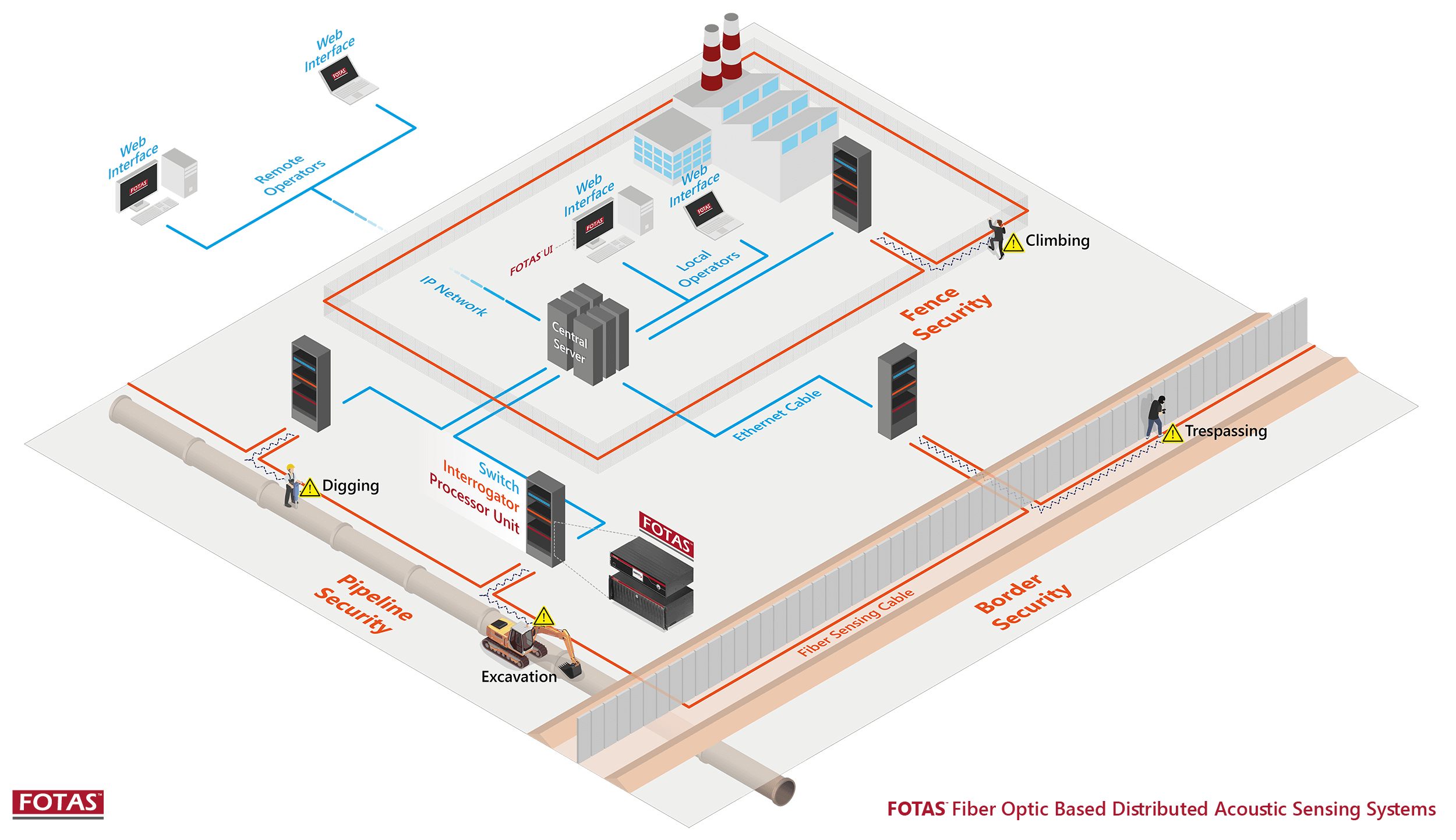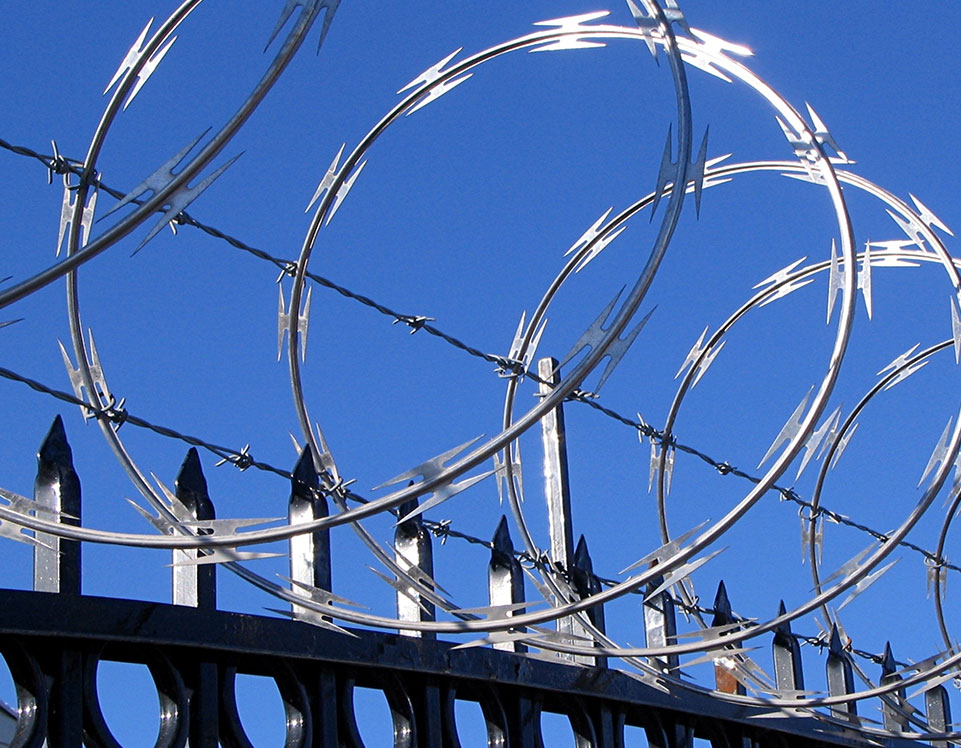Boost Your Safety With Advanced Fiber Optic Protection Solutions
In an age where security is vital, innovative fiber optic protection systems offer an engaging solution for enhancing safety across various atmospheres. What ramifications do these improvements hold for future safety and security steps?
Benefits of Fiber Optic Safety
Utilizing the benefits of fiber optic technology considerably improves protection systems across different applications. Among the main advantages is the enhanced bandwidth capacity, allowing for the transmission of large quantities of data at broadband. This is particularly important for real-time video clip surveillance, where high-resolution feeds can be sent out without latency, ensuring immediate reaction capacities.
In addition, fiber optics display exceptional resistance to electro-magnetic interference, which is vital in atmospheres with possible signal disruptions. This integrity makes certain consistent performance in crucial safety and security operations. Fiber optic cable televisions are less vulnerable to touching and unauthorized gain access to compared to conventional copper wiring, therefore enhancing information integrity and discretion.
An additional noteworthy advantage is the longevity of fiber optic systems; they are a lot more resistant to ecological factors such as moisture, temperature changes, and destructive compounds. This strength converts to reduce maintenance costs and longer life-spans for safety and security installations.
Last but not least, the light-weight nature of fiber optic cords promotes simpler installation and directing, especially in complicated facilities (fiber optic security system). Eventually, the combination of fiber optic innovation right into protection systems not just reinforces protection actions yet additionally enhances operational performance
Secret Attributes to Think About
When evaluating fiber optic protection systems, several essential features must be taken into consideration to make sure optimum performance and efficiency. Initially, examine the system's discovery range and sensitivity; a comprehensive variety enables keeping track of big locations, while high sensitivity makes certain that even small disturbances are identified quickly.
Next, take into consideration the combination capabilities of the system. A fiber optic protection system must perfectly user interface with existing safety and security steps such as video cameras and alarms, creating a natural security network.
Resilience and ecological resistance are likewise critical functions. Guarantee that the system is created to withstand rough weather and potential physical threats, as this will certainly prolong its functional life-span.

Last but not least, explore the scalability of the system. A robust fiber optic security system should be quickly expandable to suit future needs without substantial overhauls. By thoroughly thinking about these features, you can choose a fiber read more optic safety and security service that boosts security and safety and security in your setting.
Setup Process Introduction
To effectively apply a fiber optic protection system, a systematic setup procedure is vital. This procedure begins with a thorough site assessment to determine the details security demands and to identify optimum locations for fiber optic cables and security tools. Following this assessment, the setup team will establish a thorough strategy, including cord paths, essential equipment, and compliance with neighborhood policies.
Next, the installation involves laying the fiber optic cables, ensuring they are protected from environmental elements and physical damage. Appropriate handling methods are important, as fiber optic cables are delicate and can be conveniently damaged. After the cabling is mounted, connectors and terminations are meticulously finished to guarantee signal honesty.
The succeeding stage includes installing safety and security devices such as video cameras, motion detectors, and alarm systems, all incorporated with the fiber optic network. Rigorous testing is performed to verify that all parts are operating appropriately and to ensure optimal efficiency.

Comparing Fiber Optic to Standard Solutions
The advancement of security modern technology has actually led to significant improvements in the contrast between fiber optic systems and standard copper-based systems. Fiber optic systems utilize light to transmit data, providing superior transmission capacity and speed contrasted to their copper counterparts. This leads to improved information transmission capabilities, making optical fiber ideal for high-resolution video clip security and real-time monitoring.
Furthermore, fiber optic cable televisions are resistant to electromagnetic interference, reducing the probability of signal destruction caused by exterior elements. This characteristic makes Learn More Here sure regular efficiency, also in challenging environments. On the other hand, traditional copper systems are more susceptible to interference, bring about potential susceptabilities in security applications.
Durability is one more benefit of fiber optic systems. They are much less susceptible to harm from environmental elements such as moisture and temperature level changes, which can jeopardize copper electrical wiring. Fiber optics are lighter and thinner, allowing for easier installation and decreased physical impact.
Nonetheless, traditional systems tend to have reduced initial costs, making them appealing for budget-conscious projects. While fiber optic systems might need a higher in advance financial investment, their long-lasting benefits-- such as lower maintenance costs and greater dependability-- often outweigh the preliminary expenditure, placing them as a remarkable selection for contemporary safety demands.
Future Trends in Protection Innovation
Emerging fads in security innovation are positioned to transform the landscape of surveillance and hazard detection - fiber optic security system. As companies increasingly face innovative hazards, innovations such as expert system (AI) and machine understanding (ML) are becoming essential to safety systems. These technologies improve the ability of fiber optic systems by making it possible for real-time data analysis, determining abnormalities, and automating responses to possible violations
Furthermore, the assimilation of the Internet of Points (IoT) is revolutionizing safety structures. IoT gadgets can give thorough situational awareness and promote seamless interaction in between different protection parts. This interconnectedness enables more effective monitoring and faster incident reaction times.
Biometric authentication is additionally acquiring energy, offering a greater level of safety and security via special physical attributes. As this innovation advances, it is likely to be incorporated right into fiber optic systems for enhanced access control.
Verdict
In conclusion, advanced fiber optic safety and security systems represent a substantial development in security and monitoring modern technology. Their premium data transfer, resistance to disturbance, and toughness facilitate trusted monitoring and data honesty. As these systems incorporate AI and IoT capacities, they improve the general protection framework, making certain durable defense for possessions. The Extra resources change from standard systems to fiber optic solutions mirrors an expanding pattern in the direction of more reliable and effective protection steps in a significantly complicated technical landscape.